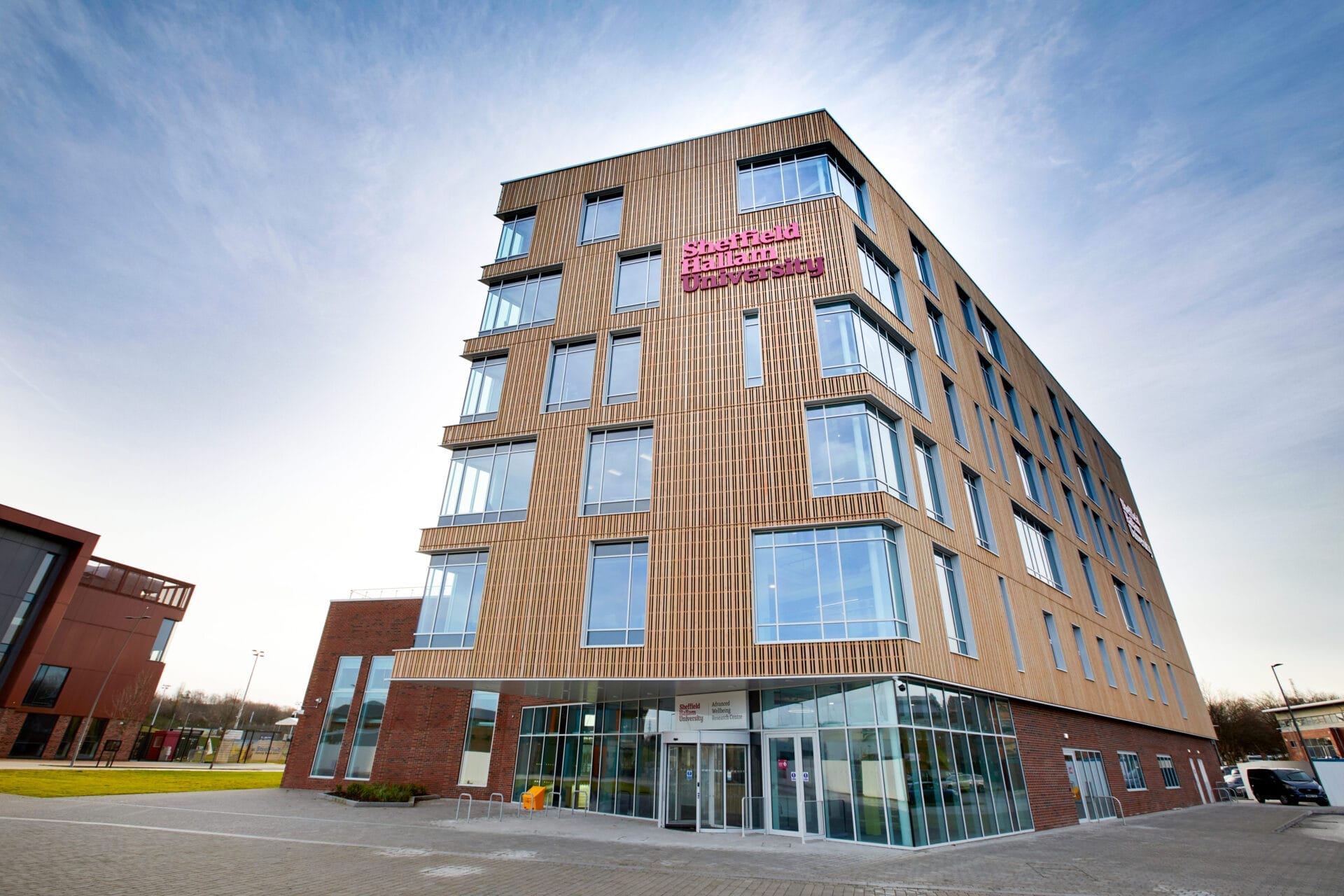
The most advanced research centre in the world for developing innovations that will increase physical activity, Sheffield Hallam University’s Advanced Wellbeing Research Centre (AWRC), has completed its build and is open for operation.
The AWRC was officially launched by Sheffield City Region Mayor Dan Jarvis and Paralympic champion Dame Sarah Storey on Friday 24 January at a major event attended by over 150 guests from Government, the Sheffield City Region, education, health and wellbeing sectors.
The centrepiece of the Sheffield Olympic Legacy Park, the only Olympic Legacy development to be built outside of a host city, the AWRC is dedicated to improving the health and wellbeing of the population through innovations that help people move more. The AWRC’s core mission is to prevent and treat chronic disease through co-designed research into physical activity.
HLM Architects designed the new five-story AWRC building that includes 3800 m2 of specialised laboratory, research and office space. We are proud to have curated each part of the facility with the wellbeing of the building users in mind. We have used materials and elements from nature, good natural daylight, and included ample views to outside. The design has movement as a central theme, with a feature stair located in a prominent position at the main entrance; encouraging occupants to use this in favour of the passenger lift – which is hidden at the rear of reception.
The multi-million pound AWRC has been supported by £14million funding from the Department of Health and Social Care and a £905k investment from the European Regional Development Fund. The facility has aspirations to attract more international investment and extend its reach.
Talking about the new AWRC, HLM Sheffield Studio Director, Delia Harmston, said:
“The investment and support in this outstanding new facility shows a mark of confidence in Sheffield’s ability to seek research-led solutions for societal challenges.
“As a striking building in Attercliffe, an area that is long overdue attention, the AWRC provides a new beacon of opportunity. It offers its local communities a window to healthier, more active lives and also provides an attractive statement of regeneration and positive development.
“We look forward to being part of the ongoing story about the AWRC’s impact on communities”
